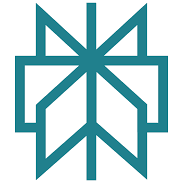Domain Name
What is a Domain Name?
A domain name is an essential part of a website and is seen or typed on the URL tab of a web browser. It is a unique name that someone can assign to a site hosted on a web server. The domain works similar to a phone number or an email address as there can be no duplicate used by different entities. For example, since www.huffpost.com is already taken and currently active, no one can use that same domain.
Domain names are made up of letters, numbers, and symbols. Someone needs to buy and register a domain name via domain registrar before using it to host websites. Some domains cost more than others as they can provide more value to the website due to positive history.
Purpose of a Domain Name
Domain name makes it easier to find a particular website as it is more memorable to users than IP addresses. Instead of typing a lengthy group of numbers incomprehensible to human minds, people can simply enter a name or a word.
Another reason why domain is essential is that it helps in branding. The URL of a website is used to build an image or brand around specific keywords, for example, facebook.com.
IP Address vs. Domain
Internet Protocol address is a distinct numerical name assigned to every machine connected to the internet. It is an integral part of communication and provides location details of a computer network for sharing resources and data. A good example of an IP address is 192.168.1.1.
IP addresses are often assigned to particular hardware. They are not connected to any web hosts and can be changed only within the device.
Domain names, on the other hand, are much easier to manage to use and are less technical.
They are tied to specific hosting servers where they can be changed or transferred.
Parts of a domain name

Subdomain
A subdomain is an additional component of the primary domain and is in the third position on the domain hierarchy. In the URL, it is visible before the domain name. A subdomain is free and can be created to categorize and navigate different parts of a website.
In the example above, community.powerbi.com is a subdomain of powerbi.com.
Domain Name
A domain name, also called the main domain, is the website’s name. Before it can be used, it should be bought and registered to a web hosting platform together with the top-level domain.
Some other examples of domains are (in bold):
- huffpost.com
- thecommonwealth.org
- ubersuggest.com
Top-level Domain
The top-level domain is the part of a domain name that reflects the nature of the site. It is located at the last part and either be generic TLDs, which are open to anyone, or country-code TLDs specific to countries or territories of origin.
Some examples of generic top-level domains are:
- .edu
- .info
- .com
- .biz
- .org
Some examples of country-code top-level domains are:
- .ca
- .uk
- .ph
- .us
Root Domain
The root domain is at the highest level of the domain hierarchy. It is achieved by combining the main domain and the top-level domain. When someone types the root domain of a particular website, they will be directed to the site’s top page, which is usually the homepage. The root domain is fundamental as subdomains can’t work without it.
Some examples of root domain are (in bold):
- ideas.ted.com
- entrepreneurshandbook.co
- drive.google.com
Root domains are also referred to as the “web address.”







